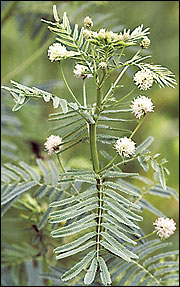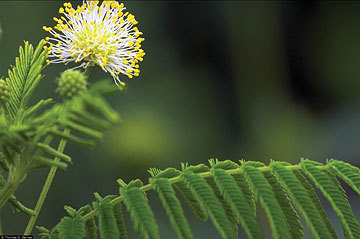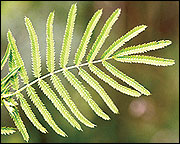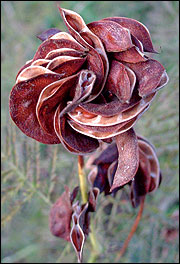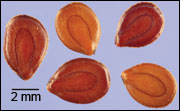Illinois bundleflower
- Desmanthus illinoiensis
Forb
Illinois bundleflower's structure makes it attractive for quail brood cover.
©Don Kurz
Flower heads are white spheres with yellow stamens at the tips.
©Tom Barnes, University of Kentucky
Description
Illinois bundleflower can be identified in summer by the doubly compound, fernlike leaves and white spherical flower heads. By fall, the stems become tough and woody, and the seedpods are distinctive, bearing a ball-shaped cluster of pods, each containing several flat, brown seeds.
Bloom period
June to August
Use by bobwhites
Despite its relative abundance, bundleflower seeds are rarely eaten by bobwhites, which is disappointing, considering that it is one of the easiest and cheapest native forbs to grow. Its height (about 3 feet) and propensity to form a dense stand along roads and on disturbed areas make Illinois bundleflower more important for brood cover than for food. Mexican bean beetles commonly feed on bundleflower, but their use by bobwhite chicks is uncertain. Because it responds so well to disturbance, Illinois bundleflower serves as a good barometer for quail managers. It may be assumed that plant communities with an abundance of bundleflower are good for brood rearing.

